The website Arte per strada Torino arises with the aim of creating a single portal in which to highlight the first complete census of public art works (paintings, sculptures, installations, etc.) existing in Torino and in its belt. It also has collected and underlined publications, documents, other websites related to the topic of public art.
Arte per strada Torino is on Instagram 
Currently on the website are:
8971 VISIBLE ARTWORKS
8490 DISAPPEARED ARTWORKS
2696 PHOTOGRAPHS
THE PROJECT
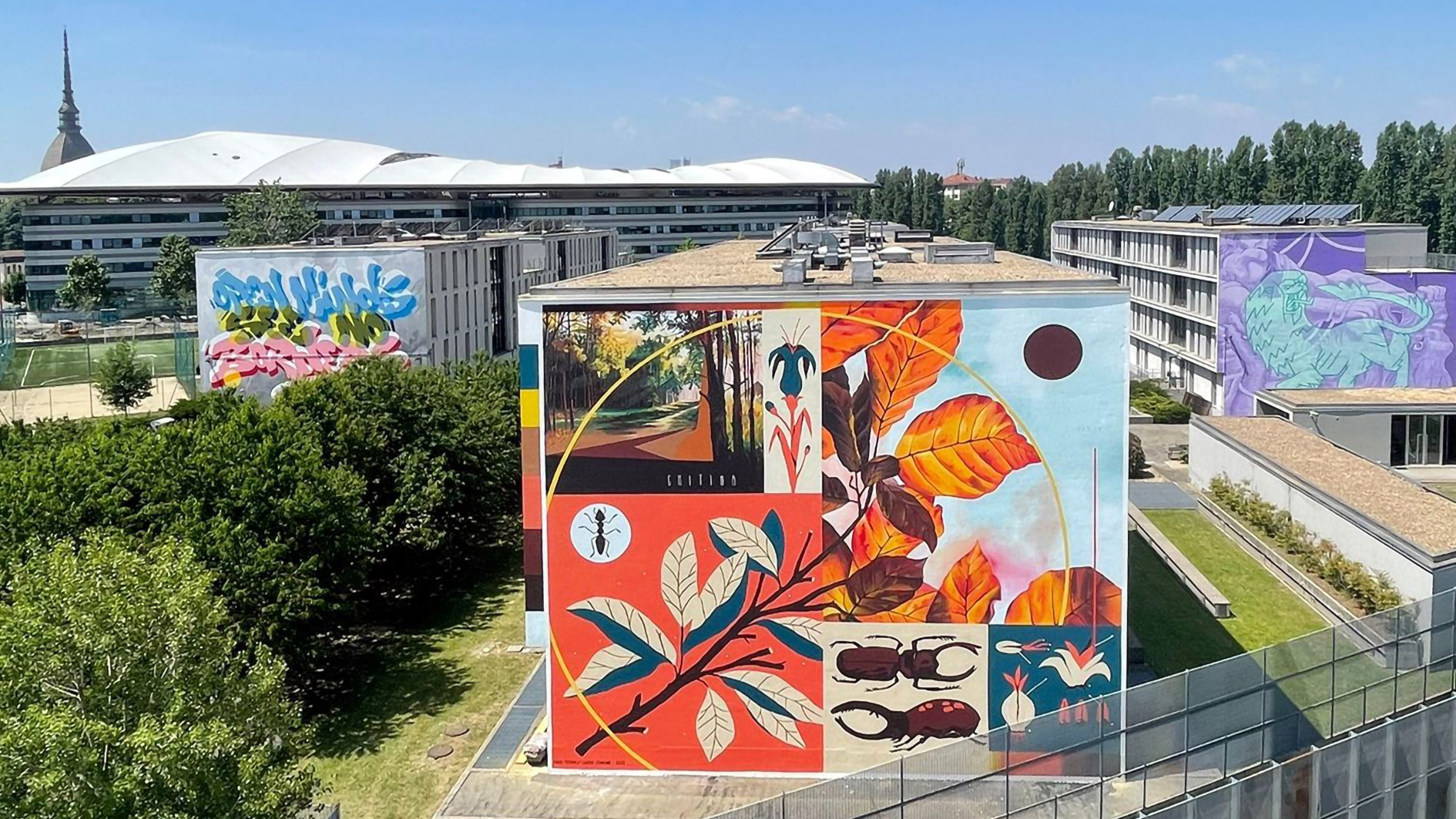
Arte per strada Torino is the first whole census in an Italian city of all the public art works, each of them catalogued and photographed, periodically updated to highlight on the website and Instagram page the paintings, sculptures, installations, etc. in public spaces in Torino and its surroundings.

Arte per strada Torino works in close synergy with the portals Arte Urbana a Torino on the Geoportale of Città di Torino, Geografie metropolitane by Urban Lab, and MAD del Comune di Collegno, as well as with MAU Museo Arte Urbana, and the associations Monkeys Evolutions and Il Cerchio e le Gocce, several artists and many people who provide news, information, images fundamental for the project development.

We have surveyed all the public artworks created in the area of Torino from the mid-twentieth century to today. We have chosen to exclude works that are located in places not freely accessible to the public, those visible only at particular times (for example for a few months or at night, such as decorated shop portcullises), those that are an integral part of architectural projects (such as decorations on Art Nouveau buildings or statues on monumental tombs), and graphic interventions without particular “artistic” ambitions, such as trivial tags on walls.
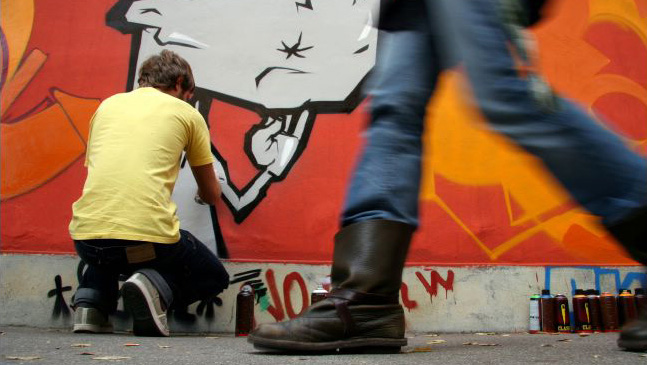
To survey the public art works we looked up existing inventories of works, than we conducted systematic reconnaissance — repeated over time in all the neighborhoods of Torino and in the municipalities of its belt — keeping a continuous dialogue with the associations of artists and with the offices of local administrations that promote public art.

Despite our attention and care, it is likely that some works escape us, also because the heritage of public art — between new creations and cancellations — is by its nature extremely "unstable". Therefore thanks to those who will want to report new or disappeared works, as well as any errors on the Arte per strada Torino website.
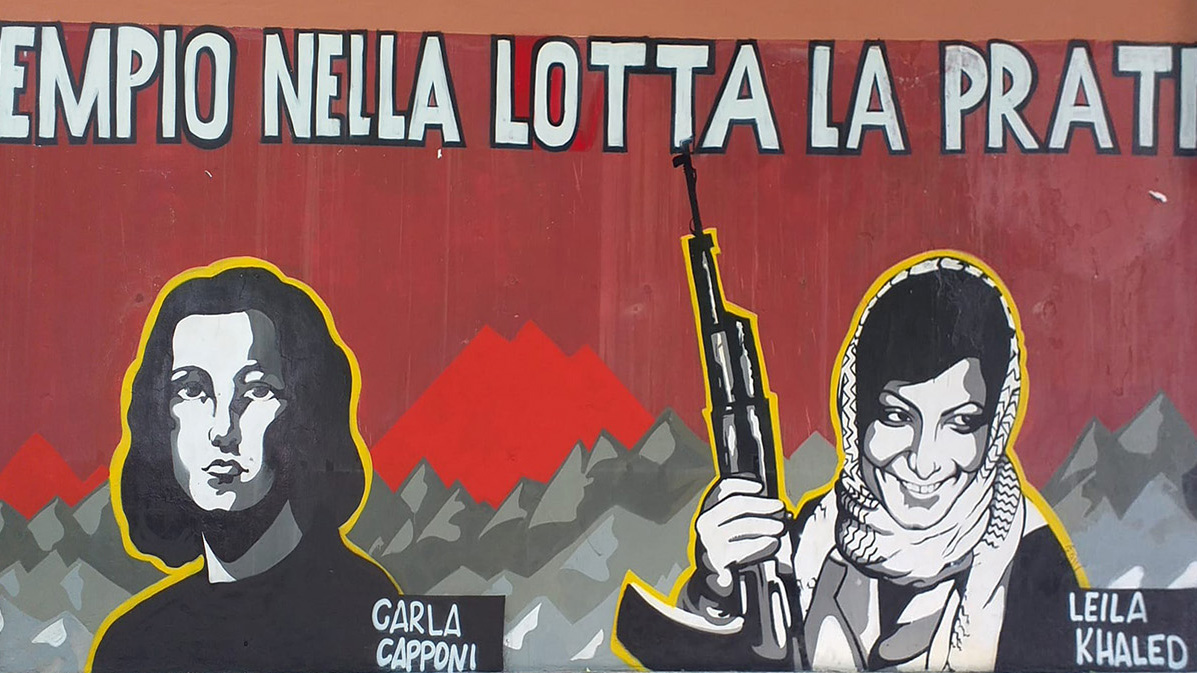
As research group of Arte per strada Torino we have produced in recent years several analyses and reflections on public art (in Torino, but not only), which we have collected on the page Insights.
PUBLIC ART

The term public art does not refer to the (non-private) ownership of the works, but to the fact that they are paintings, sculptures and artistic installations set in public spaces (streets and squares), namely outside museums and art galleries. Throughout history, public art has often served to celebrate institutional, political, religious and economic power. Whereupon, from the second half of the 20th century, it also became a way to involve citizens, give voice to marginal social groups, inserting the artworks into the “living fabric” of the neighborhoods; it is no coincidence that today in Torino two thirds of the works are located in the suburbs and in the municipalities of the metropolitan belt.

Since the 90s, the capital of Piedmont has increasingly characterized itself as a “city of contemporary art”, with events such as the fairs Artissima or Paratissima, several museums (GAM, Castello di Rivoli, Pinacoteca Agnelli and others), but also increasingly thanks to its growing collection of artworks in public spaces: hitherto, Arte per strada Torino has recorded over 1,400 works and their number is constantly increasing.

The largest concentration of public artworks is in the Campidoglio district, thanks to the MAU Museo d’Arte Urbana, and in Parco Dora. Overall, Arte per strada Torino has reckoned the works of 91 different artistic collectives and of 395 individual artists (20% of them are women): the two main groups, authors of dozens of works and jam walls, are Monkeys Evolution and Il Cerchio e le Gocce; among the individual artists: Ugo Nespolo, Mrfijodor, Karim Cherif, Corn79, Wat, Zeta, Rodolfo Marasciuolo, Millo, Vito Navolio, Xel, Dise, Massimo Ghiotti, Nice and the Fox stand out for the number of interventions.

The majority of the works surveyed by Arte per strada Torino are mural paintings (single or multiple side by side), but there are also many installations, sculptures and panels. Besides, we tried to classify the works by style: the comic-style ones (i.e. with caricature-like features) and the abstract ones (with geometric and stylized shapes) prevail; about a fifth of the works are made in a realistic style, the rest are writing works (artistic/geometrical writings).

The figurative works are about 60% of the total and mainly represent people (in 476 works), animals (324: mostly wild mammals, birds and pets), then sceneries/views (131), plants (81), various objects (80). The human beings depicted are in majority males, youngsters and of white ethnicity (although there is no lack of references to the growing urban multi-ethnicity, with Africans, Arabs, Oriental features people).
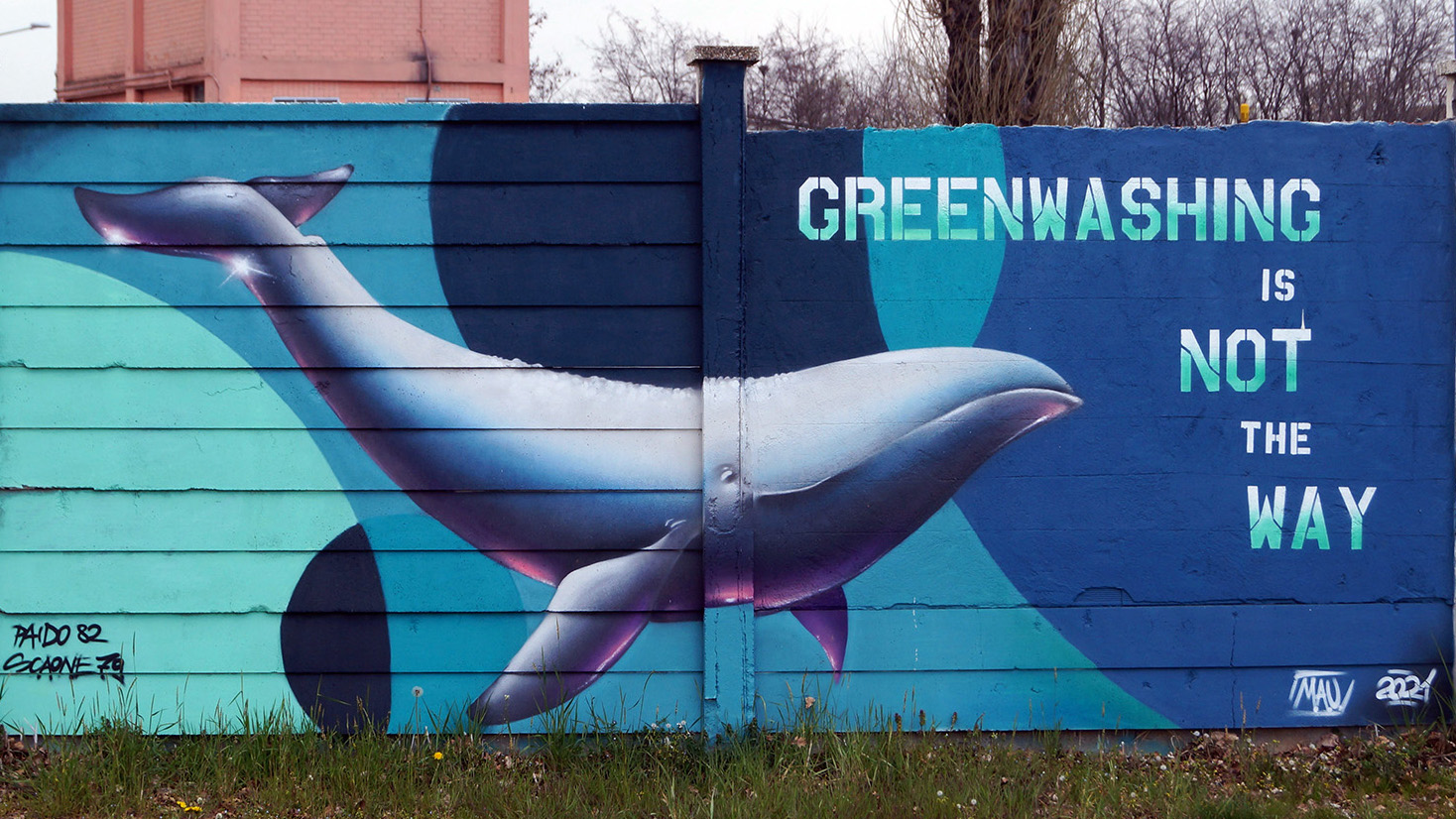
About a third of all the artworks surveyed send “messages”, mostly about peculiar urban spaces and local territories (usually the neighborhood), followed by the topics of peace, solidarity, environment, culture and others.
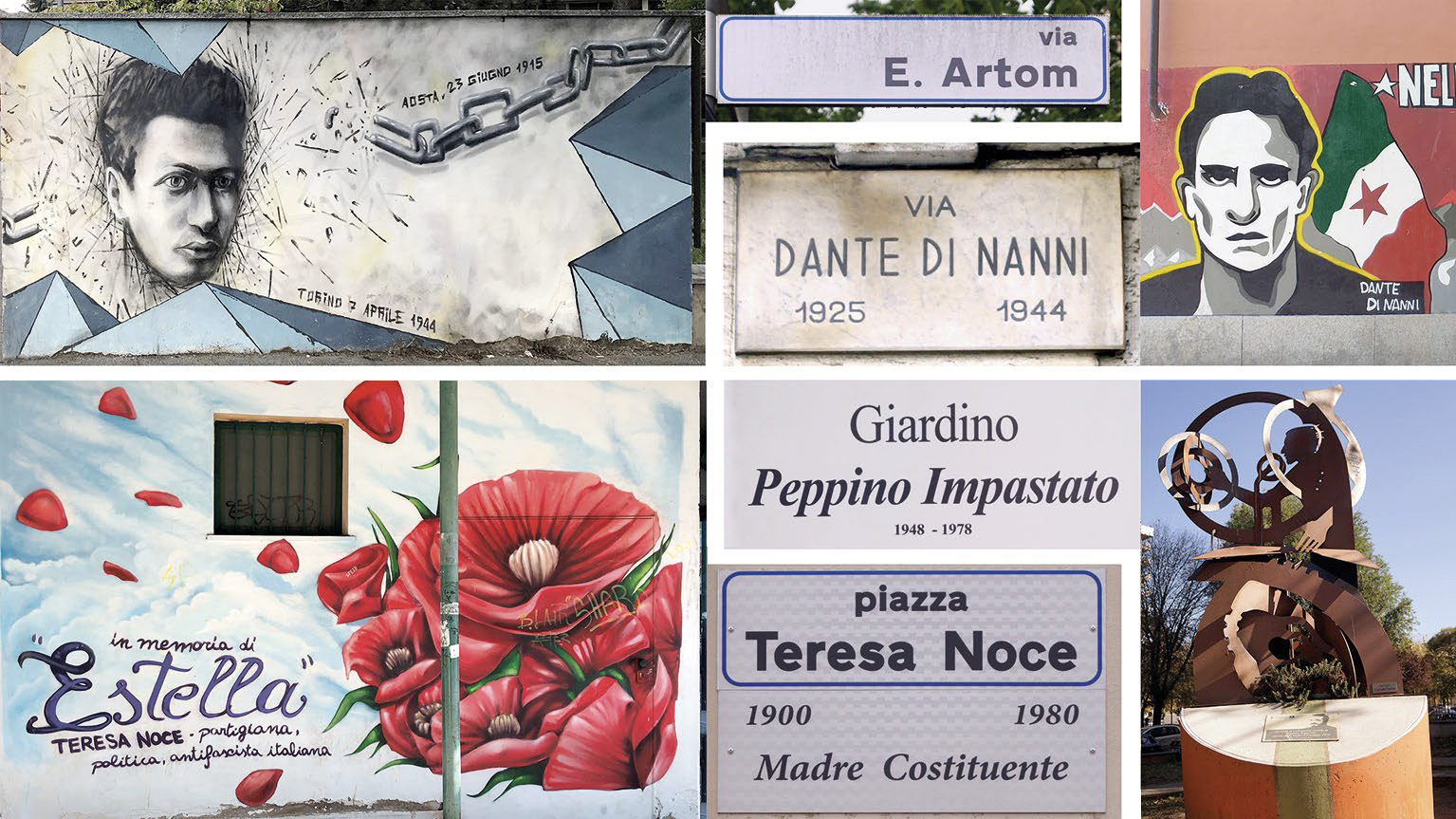
About seventy works are devoted to famous people, especially politics, characters of fairy tales and comics, literary men, religious men, etc. Thus, public art also plays an “integrative” role with respect to street toponym, thanks to the decidedly more relevant emotional impact of the graphic representation (compared to that of a simple road plate) in celebrating or commemorating some person; in short, a sort of “augmented” toponym.
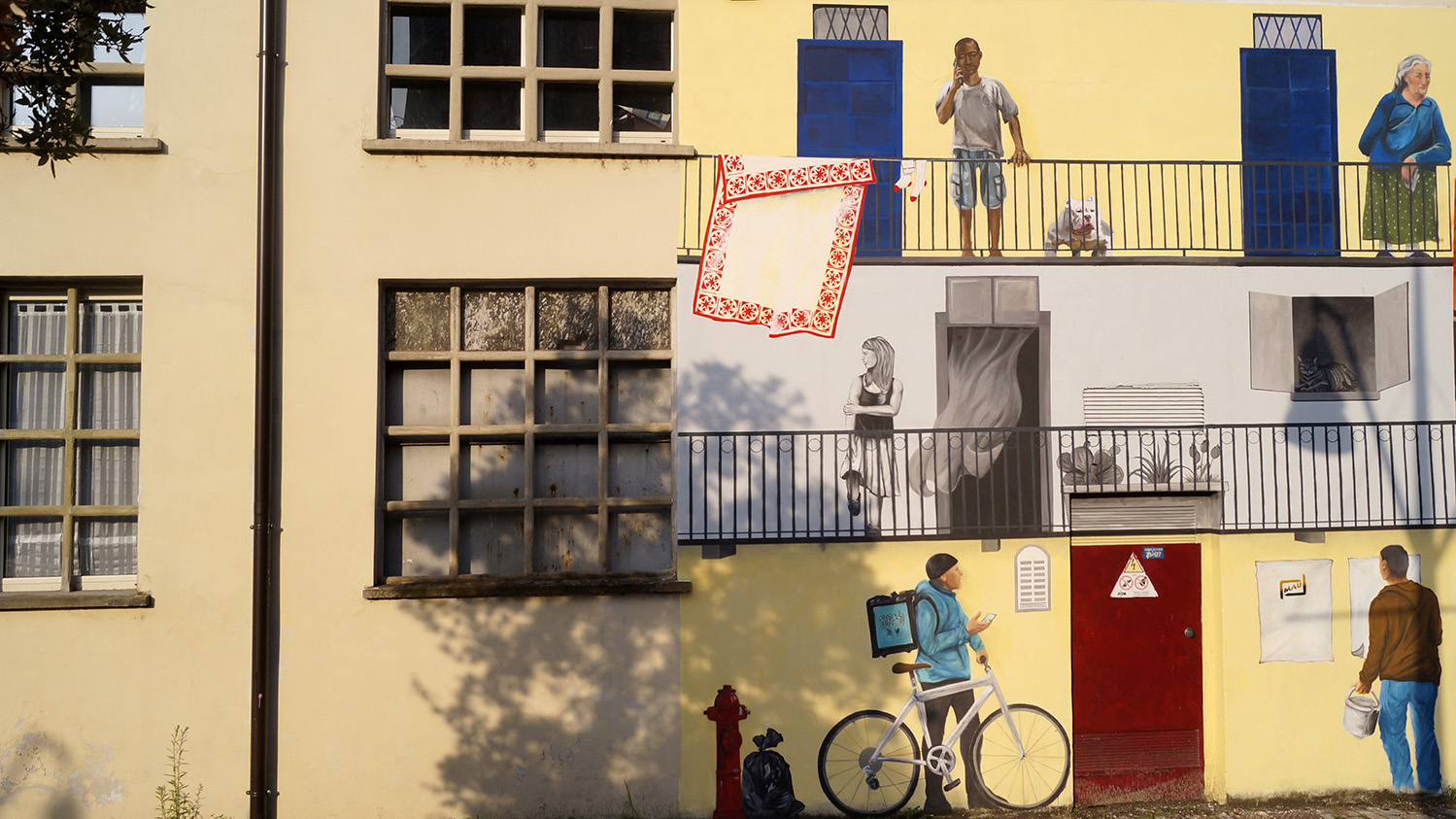
It is obvious that the individual artworks may or may not be liked depending on who observes them. However, on the whole, the redevelopment effect carried out by public art is unquestionable; also because the majority of works are created in urban spaces that, in most cases, were previously squalid and degraded (peeling walls, blind walls of buildings, etc.). If small-sized artworks often appear as a sort of urban “mending”, the large-sized ones produce the greatest perceptive effects on the urban environment.

In Torino, in recent years, several hundred works of public art have disappeared (since removed, erased, etc.; see the Disappeared Artworks page on this site). Sometimes it depends on the materials used, which are not always durable, sometimes on the fact that it is not possible to intervene in order to restore all of the more than 1,000 existing works (so much so that there is an ongoing debate among experts on the criteria for choosing both the works to be privileged and the type of restoration: conservative or, at least partially, transformative); sometimes yet due to the lasting tradition of a public art deliberately conceived as “ephemeral” and not durable.